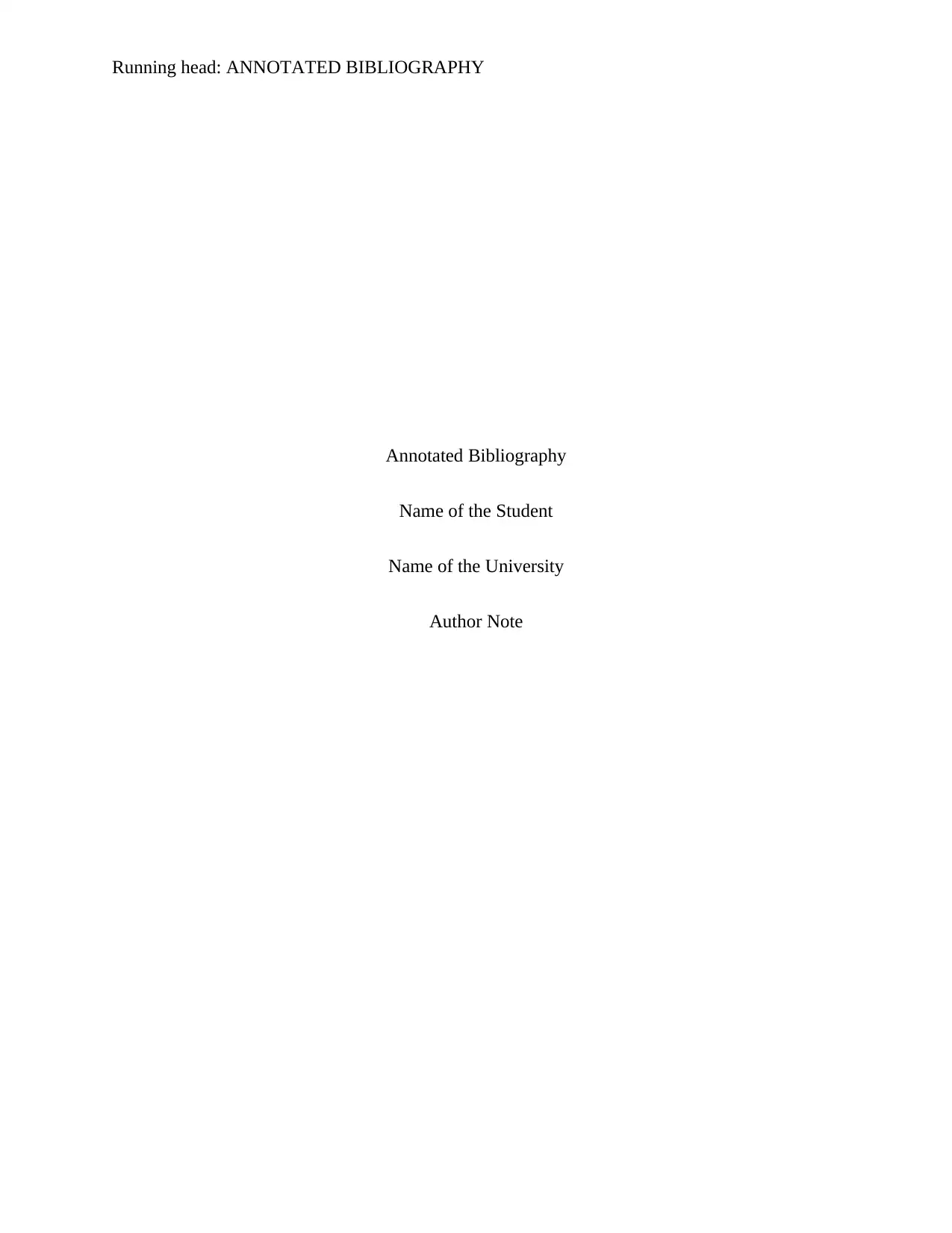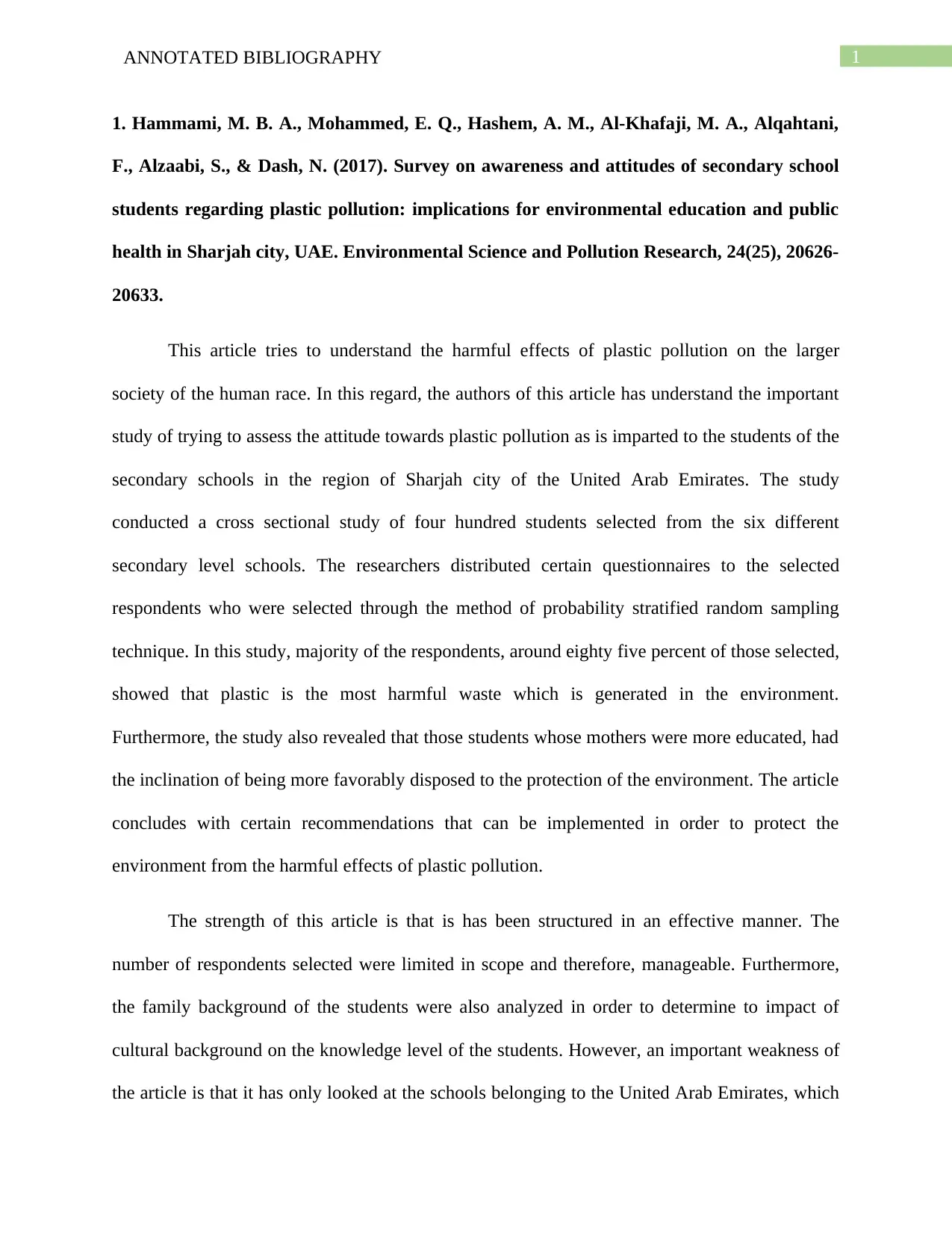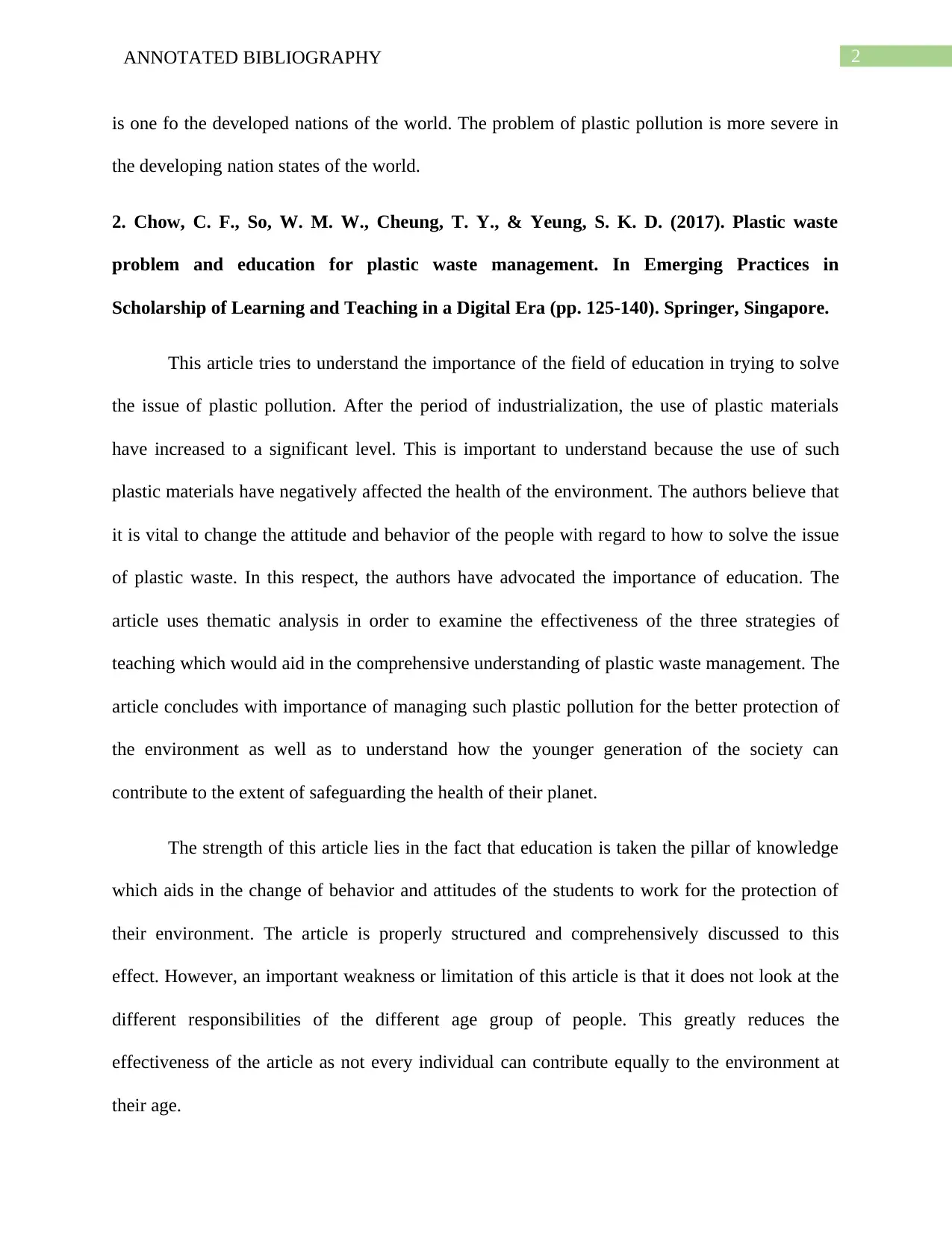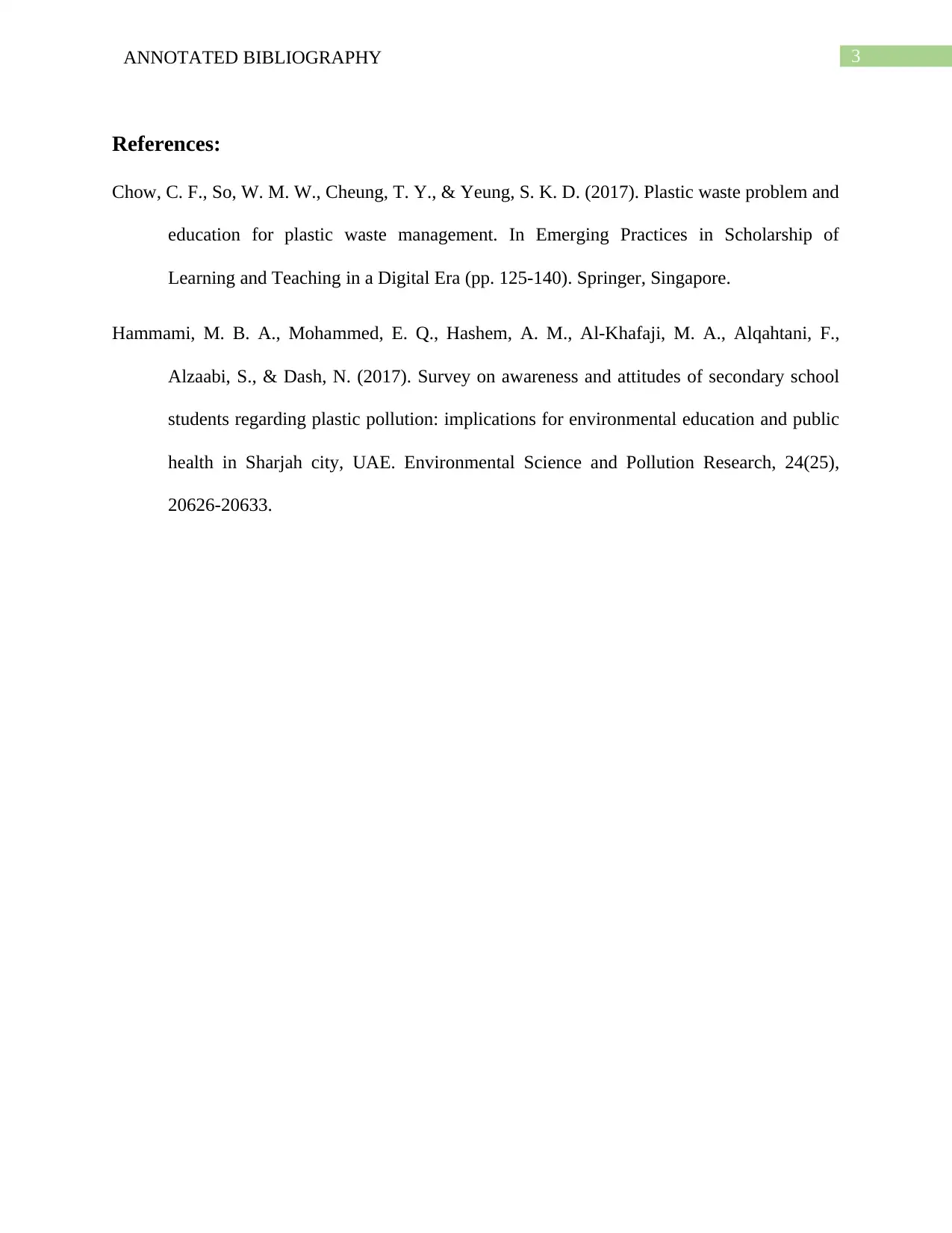Annotated Bibliography: Plastic Pollution Awareness and Education
VerifiedAdded on 2022/09/29
|4
|877
|21
Annotated Bibliography
AI Summary
This annotated bibliography examines two articles related to plastic pollution. The first article, by Hammami et al. (2017), surveys secondary school students' awareness and attitudes towards plastic pollution in Sharjah, UAE, highlighting the impact of parental education on environmental attitudes. The study, conducted through questionnaires, reveals that most students identify plastic as the most harmful waste and suggests recommendations for environmental protection. The second article, by Chow et al. (2017), emphasizes the role of education in addressing plastic waste management. It analyzes teaching strategies to change behaviors and attitudes, advocating for the importance of educating the younger generation to safeguard the environment. Both articles provide valuable insights into the problem of plastic pollution and the importance of education and awareness in addressing this critical environmental issue.
1 out of 4











![[object Object]](/_next/static/media/star-bottom.7253800d.svg)